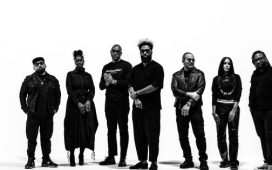In the unfolding narrative of advertising’s cultural missteps, the recent Heinz ad controversy serves as a poignant reminder of the shadows cast by history. These ads resonate with the undertones of propaganda posters used to dehumanize and mischaracterize. They are relics of a time when images were manipulated to weave false narratives—narratives that continue to shape perceptions today.
This issue extends far beyond Heinz. Last year, KFC’s “Sorry, Utensils” campaign in Canada faced similar criticism for its depiction of Black individuals eating chicken, their exaggerated reflections in the unused utensils bordering on caricature. Coupled with the campaign’s slogan “finger lickin’ good,” seen by some as appropriating African American Vernacular English (AAVE), these choices weren’t simply oversights, these choices read as microaggressions that cut deep, reminding Black consumers that their identities are still subject to careless misrepresentation.
Consider the haunting imagery of Nazi propaganda, designed to marginalize and vilify, or the grotesque satire of African Americans during the Jim Crow era. These weren’t mere oversights; they were calculated attempts to distort reality, and their legacy persists. I think back to my visceral reaction in 2019 when Gucci released a balaclava eerily reminiscent of blackface minstrel makeup. It was a slap in the face, a stark reminder that even brands with massive resources can fall prey to these blunders. The Heinz ad, featuring a Black man with his mouth covered in red ketchup, evokes similar imagery.

While these ads may not have intended to cause harm, they inadvertently echo visual tropes from a painful past used to dehumanize and marginalize Black individuals.
In today’s world, brands can’t afford to be tone-deaf. It’s not solely an ethical imperative, but a strategic one. These instances underscore the need for brands to be more mindful of the subtle messages their visuals convey. It’s an opportunity for us to collectively learn and evolve, recognizing that even unintentional missteps can perpetuate harmful stereotypes.
To break this cycle, brands must embrace a multifaceted approach. Here’s what brands can do today to be more nuanced in their ideation and planning stages.











